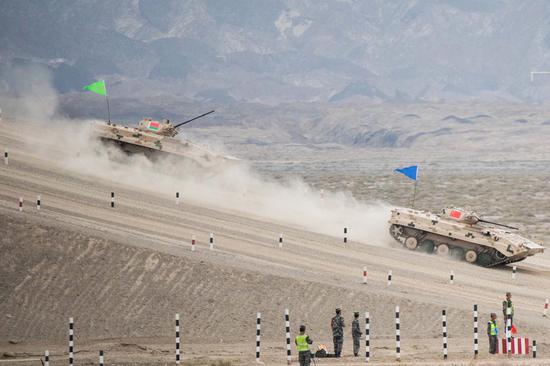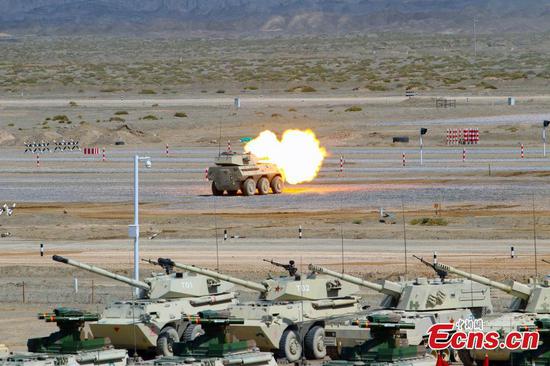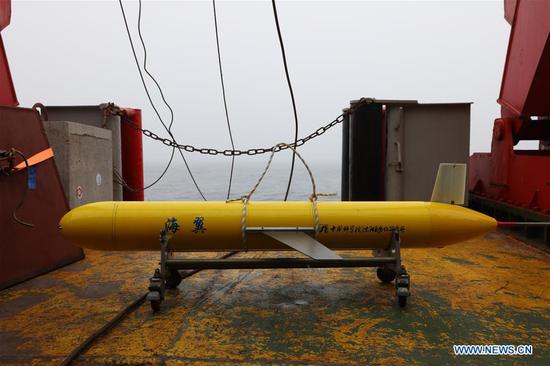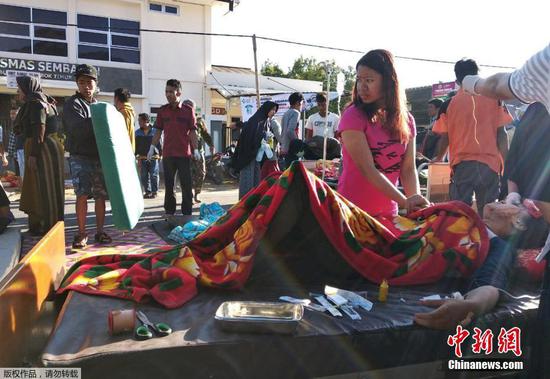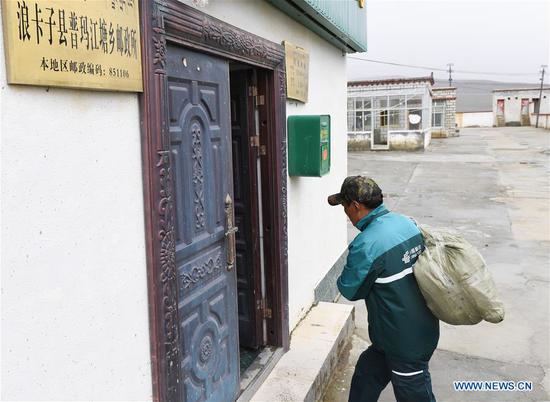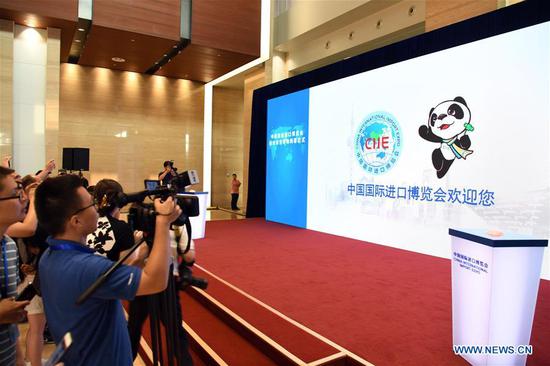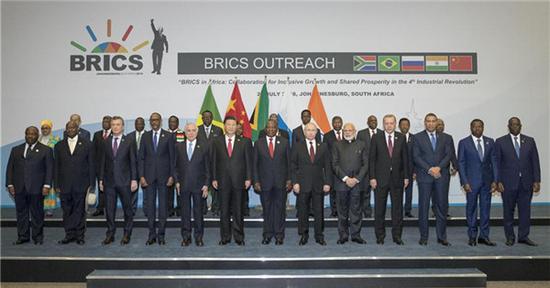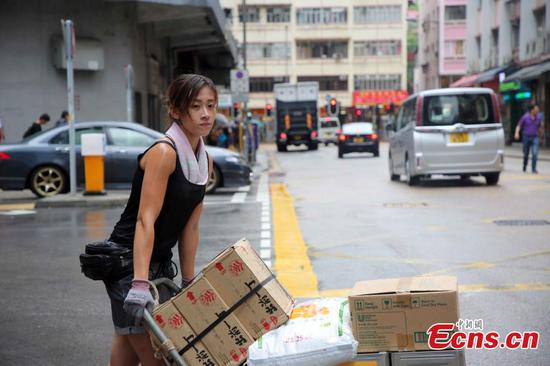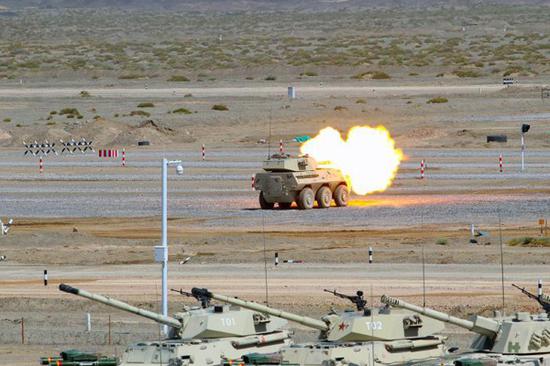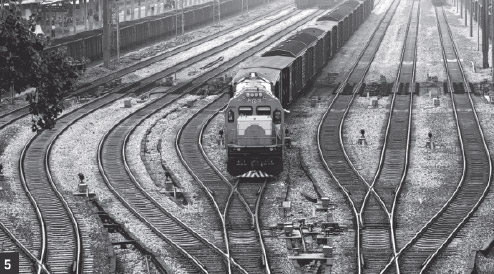
A Chongqing-Xinjiang-Europe freight train passes Dazhou railway station in Sichuan Province on its return from Duisburg. (Photo by Deng Liangkui/for China Daily)
Edward Tse, founder and chief executive officer of management consultancy Gao Feng Advisory, believes Chongqing is representative of a major global shift as the Belt and Road Initiative evolves.
"We are moving away from the world which was dominated by the maritime powers in the 19th century such as Britain, and then after World War II by the United States, to one where landlocked countries are emerging," he said.
"Chongqing is almost a starting point for this change, linking China through Central Asia to Europe. It is a very natural revival of this axis of the world that once formed the old silk routes."
One of Chongqing's impressive logistics facilities is Guoyan Port, the largest inland river port of its kind in China, which handles 30 million metric tons of freight a year.
The port was opened in 2008 and now has 16 shipping berths, which can each handle 5,000 tons. On a visit to the port in 2016, President Xi Jinping said it was "full of promise for the future".
The port handles cars - Chongqing is a major car production center with Changan Ford having a key manufacturing base in the Liangjiang New Area - as well as coal, ores and mining products.
Containers can be offloaded at the port and transported by rail to Europe. The port is one of the most important in the Yangtze River Economic Belt with goods making the 2,000 km journey upstream to Shanghai.
It takes between 10 and 17 days to transport goods from Chongqing to Shanghai at a cost of 4,000 yuan ($603) per standard container. This is considerably cheaper than the 16,000 yuan by road, which takes 24 hours, and the 8,000 yuan by rail, which takes three to four days.
"We are very well connected to railways, roads and waterways. It is important to have a multichannel logistics network," said Fang Liang, manager of the port's commercial department.
Liu Wanhong, a director of Minsheng Shipping, one of the biggest users of the port, and accounting for 30 percent of its container volume, says the port has encouraged many companies to move into the area.
"One of the most important considerations these companies have is about getting goods in and out," he said.
Another logistics facility is the Chongqing Lianglu-Cuntan Free Trade Port Area, the only bonded port area in West China.
It has been operating since 2008 and is one of only 14 such areas in the country.
Goods entering the bonded port are considered not to have entered China until they leave, when they are subject to normal customs clearance. Both Chongqing Liangbei Airport and Cuntan Port are within the bonded zone, home to six of the top 10 logistics companies in the world.
"It is very important for Chongqing to have its own bonded zone. We produce a lot of cars and laptops here and if all these have to go through Shanghai or Shenzhen it becomes very expensive for manufacturers," said Qu Huang, deputy general manager of the free trade port area.
One of the exciting aspects of Chongqing's new connectivity is being able to link Europe to Southeast Asia by rail.
One of the key organizations is the China-Singapore (Chongqing) Demonstration Initiative on Strategic Connectivity, also known as the Chongqing Connectivity Initiative.
It is the third major intergovernmental initiative formed between China and Singapore. The other two are the China-Singapore Suzhou Industrial Park, which was launched in 1994 and seen as vital in China's early industrial development, and the Sino-Singapore Tianjin Ecocity.
The Chongqing Connectivity Initiative was launched in November 2015 by President Xi and Singapore's Prime Minister Lee Hsien Loong. The aim is to develop cooperation in financial services, aviation logistics, transportation and communications, and information technology.
Speaking at his offices in Chongqing's Jiangbeizui financial district, Han Baochang, the initiative's director-general, believes there is a real opportunity to build connections between Europe and Singapore.
"Chongqing has a real opportunity to elevate its status into a hub for international and logistics," he said.
He cites the example of Vietnam, a manufacturer of high-end sport shoes, which could acquire high-quality plastics from Europe.
"The raw materials can come by rail from Europe to Chongqing and then go through the Southern Transport Corridor to Vietnam. The end product can then be sold across ASEAN (Association of Southeast Asian Nations) countries, or Europe, going back by the same route."
Tse, at Gao Feng Advisory, believes there is a bigger picture to forming greater links between Europe and China.
"There is a danger of seeing this just in terms of rail links. It all becomes a little bit technical if that is the case. It ignores the fact that China now has this overarching view emboldened by Xi Jinping's concept of building a "community of common destiny for mankind". This is not just Europe and China working together, but also countries in Africa, Central Asia, Southeast Asia and elsewhere, too."











